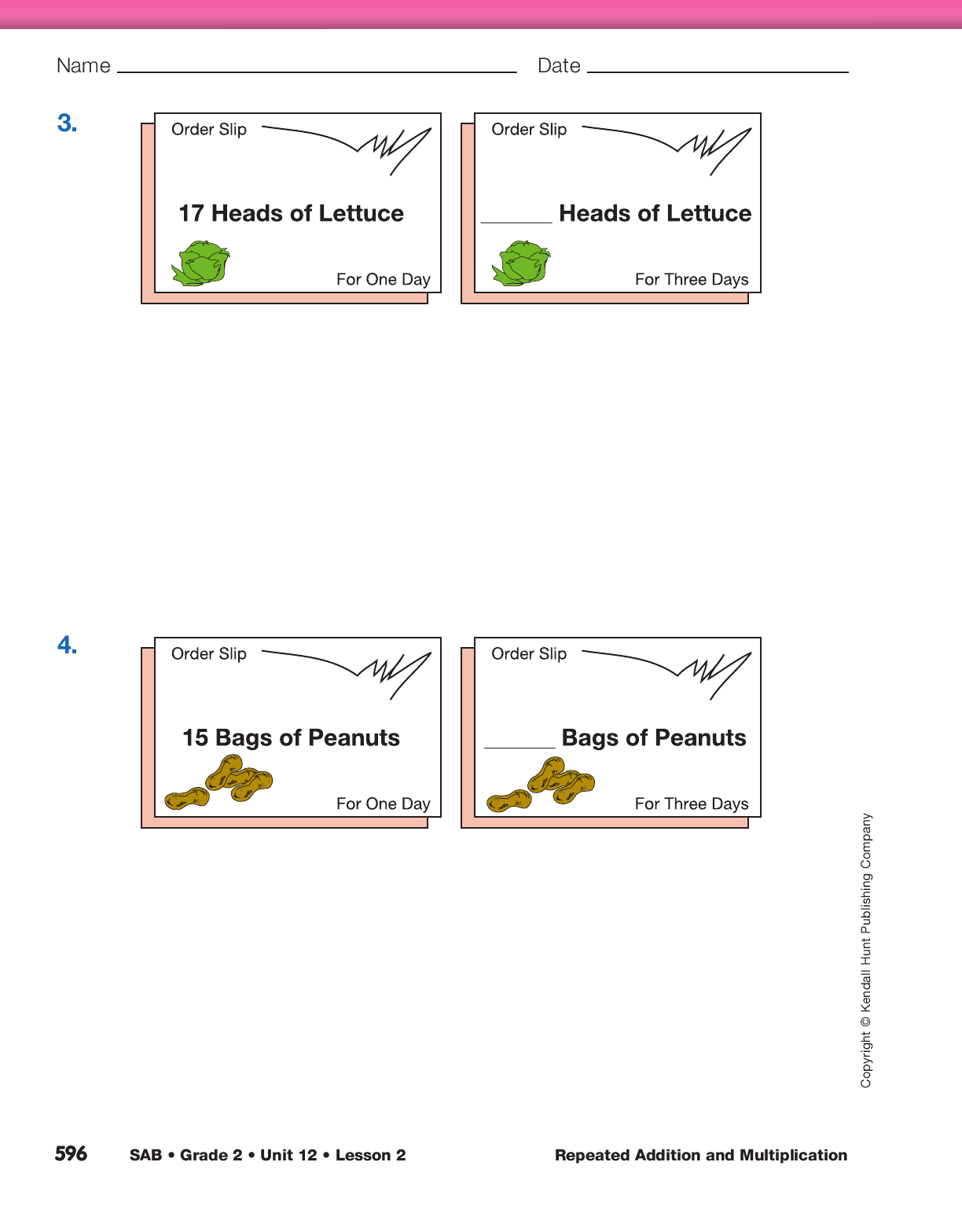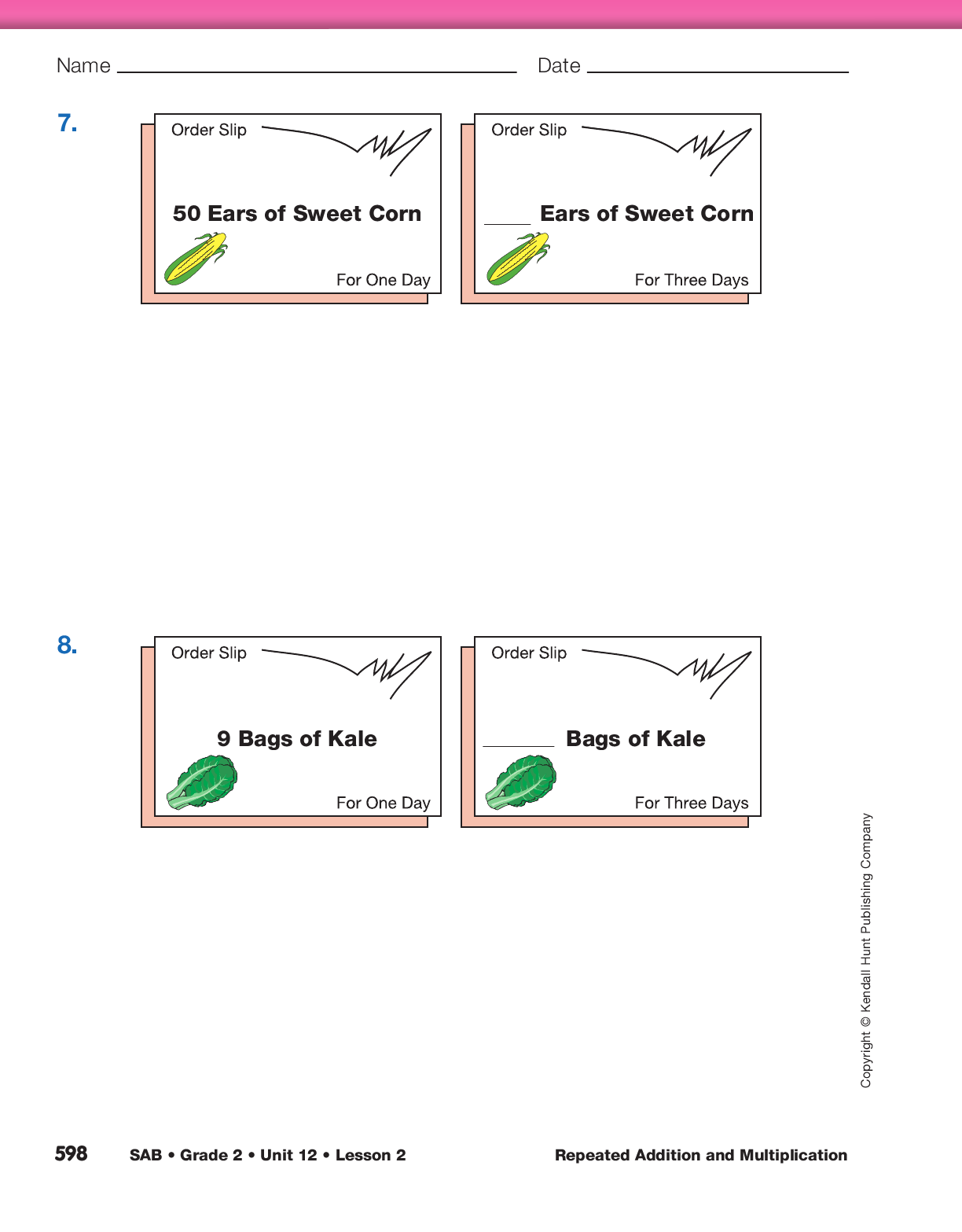Repeated Addition and Multiplication
Est. Class Sessions: 2Developing the Lesson
Part 1: Multiplication Concepts
Solve Zoo Produce Problem. The amounts of food listed on the Children’s Zoo Produce List Master and the Children’s Zoo Produce pages were taken from actual vendor produce lists furnished by Lincoln Park Zoo in Chicago, Illinois. The zoo animals really eat these fruits, vegetables, and other food items.
Display the Children’s Zoo Produce List Master.
Point out the amount of each food on the list, then present the following situation:
Ask students to help you find the amount of yellow squash the zookeeper needs to order for a three-day weekend.
Ask:
Discuss students’ methods and strategies for finding the amount of squash needed for three days. Pass out connecting cubes and ask them to model the amount. Once students have modeled the problem with connecting cubes, ask students to explain their strategies for solving the problem. Record the solution on the display. See the Sample Dialog. Work a few more of the problems on the display with the whole class.
Develop Repeated Addition Strategies. Instruct student pairs to use their Children’s Zoo Produce pages in the Student Activity Book to find the amount of certain foods needed for three days. Students will record their solutions on order slips for the zookeeper. Encourage them to use a variety of strategies to triple the number of each food listed. See Figure 1 for some tools and techniques students might use to solve these problems.
Upon completion, have students explain their strategies for finding the solutions.
Ask:
Record students’ strategies on the “Repeated Addition Strategies” chart prepared prior to the lesson. See Materials Preparation. Display the chart throughout the remainder of the unit to allow students to refer to it as needed.
If some student pairs finish early, have them finish the items on the display of the Children’s Zoo Produce List Master if it was not completed earlier in the lesson.




















